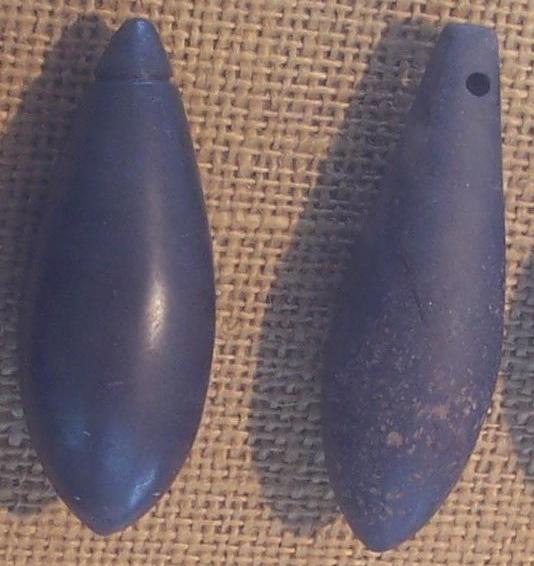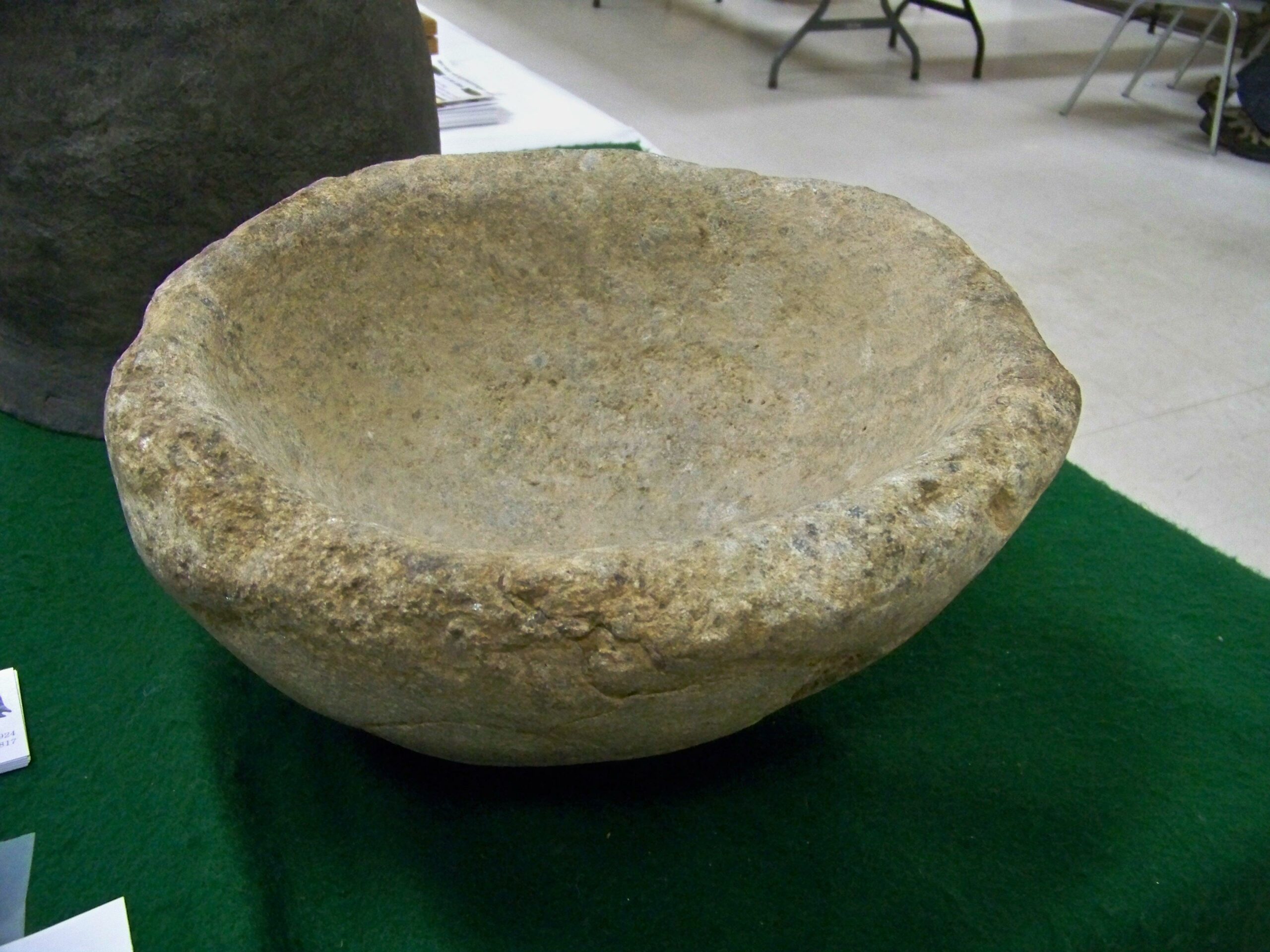
The Late Archaic period in the Southeast consisted of regional specialization using a generalized subsistence technology to efficiently exploit locally available plant and animal resources. For example, freshwater mussels from the Green River in Kentucky, provided the basis for an expanded dietary inventory that included seed crops and native and tropical cultigens, suggesting that this culture was experimenting with horticulture. Late Archaic cultures along the South Atlantic coast developed sedentary settlements based on the utilization of the saltwater oyster beds.
The Late Archaic Poverty Point culture in the lower Mississippi River Valley developed large permanent towns with satellite communities. These were linked in a program of trade in exotic nonlocal lithic raw materials as well as in the production and trade of finished goods made from these materials throughout much of the eastern United States.


Steatite or soap stone bowls were carved from the soft stone and traded across the Southeast prior to the creation of fiber tempered pottery.
Orange pottery may be some of the oldest pottery known. St. Simons and Stallings fiber tempered pottery can be found across the state of Georgia.
At the end of the Late Archaic, fiber-tempered plain and decorated ceramics appeared along the South Atlantic coast. This ceramic technology spread westward to the coastal plain of Alabama and Mississippi, to the Poverty Point culture area, southward into Florida, and eventually most of the southeastern United States. The appearance of this new technology has traditionally been viewed as the transitional period between the Archaic hunting and gathering societies and the emergence of settled Woodland period villages and communities, where existence depended on a combination of horticulture and hunting and gathering. Finally, the Archaic saw the beginning of a southeastern mound-building tradition that would be further elaborated on in the succeeding Woodland and Mississippian periods.
The Stallings Island ceramics generally contained Spanish moss as a tempering agent, and the forms consisted of simple shallow bowls and large, wide-mouthed bowls, as well as deeper jar forms. Most ceramics were plain, although some with punctated surface decoration were found. Stallings Island pottery dates from about 2500 to 1000 B.C., and ceramic finds range from the Tar River drainage in North Carolina, southward to northwest Florida.
Contemporary with Stallings Island pottery along the South Atlantic coast are other fiber-tempered wares, such as Orangeware from sites in northeast Florida and southeast coastal Georgia (1200 to 500 B.C.). Orange period sites have been located at Canaveral National Seashore, Fort Matanzas National Monument, and Timucuan Ecological and Historic Preserve. An unusual type of settlement pattern associated with fiber-tempered wares and found in this area are “shell rings.” Nearly three dozen of these ring-shaped settlements have been identified as representative of permanent, stable village life by about 1600 B.C.
By 1000 B.C. fiber-tempered ceramic technology appears to have spread throughout much of the Deep South from the South Atlantic coast to the Okeechobee Basin area of South Florida. During the early Gulf Formational period (circa 2000 to 1000 B.C.) of Alabama, middle Tennessee, and eastern Mississippi, fiber-tempered ceramic technology was acquired as a by-product of trade between the Stallings Island and Orange cultures of the South Atlantic coast and the Poverty Point culture of the lower Mississippi River Valley.
Projectile point development during the Late Archaic period saw the traditional Middle Archaic point forms in Florida diminish in size while some large blades were developed in their place.
The projectile points and blades using during the Late Archaic period include, but are not limited to (top down, left to right) the Abbey, Allendale, Clay, Elora, Lafayette, Paris Island, South Prong Creek, Culbreath, Bascom, Savannah River, and Pickwick.